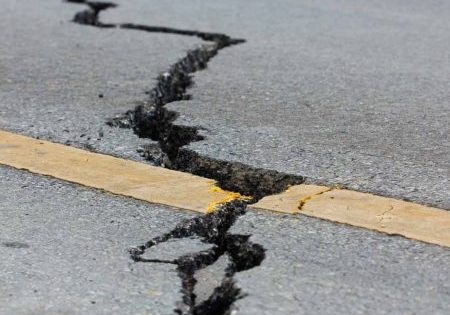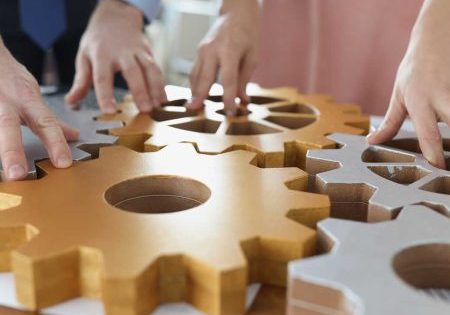Powered by KU engineering students, a new elevator energy-efficiency tool is being developed for the industry by NEII.
The surge to improve the energy efficiency of elevators has been slowly building for more than four decades dating back to the introduction of regenerative drives, which return energy back to the building’s systems such as lighting or air conditioning while helping to reduce power consumption during peak periods. Since then, the elevator industry has taken component-based steps to further address elevator energy consumption. This approach includes incorporating digital controllers with standby mode that put elevators into sleep mode when not in use and replace traditional elevator car lighting and pushbuttons with LED lights.
While most of the major manufacturers have been calculating energy efficiency of their products for years, there was no common industry baseline. National Elevator Industry Inc. (NEII) chose to remedy the situation and is close to unveiling a groundbreaking new tool that will unite the elevator industry in how it approaches the energy efficiency of its products – an elevator energy-efficiency calculator made possible with a little help from a group of students.
Towering Toward the Blue
While “Rock, Chalk, Jayhawk” is the chant most associated with the University of Kansas (KU) thanks to its frequent usage at sporting events, there is another saying that embodies the spirit of the KU community – “Towering Toward the Blue.” These four words are meant to honor the school’s endeavoring spirit, as well as KU’s talent, ingenuity and determination. And KU lived up to those four words when its students took on a project unlike any other they had seen before.
The journey started with NEII’s Central Code Committee. The Committee provides expertise and guidance on safety code development and application, working with AHJs to adopt and enforce safety codes and standards that pertain to building transportation equipment. Recently, the Committee partnered with the American Society of Heating, Refrigerating and Air-Conditioning Engineers (ASHRAE) to discuss the energy efficiency of elevators, evaluating the efficiencies of lighting and ventilation in elevators, as well as the operating drive system for the elevator to provide updates to ASHRAE 90.1.
There is an international standard focused on the energy use of elevators. ISO 25745 specifies methods for measuring and verifying energy consumption of elevators, escalators and moving walks. But NEII sought to take it a step further and provide a consistent measurement for elevator manufacturers. Ultimately, NEII found the answer with the Capstone project team at KU.
“Looking for new, exciting projects, I was intrigued about doing one with NEII. Amy outlined issues experienced in the elevator industry, and we brainstormed various solutions and projects,” said Millicent A. Coil, PhD, associate professor in the Mechanical Engineering Department at KU, continuing:
“I had never had any experience with construction or elevators, so it was really interesting to hear about the issues and think about possible solutions. It was especially enlightening to hear about how codes evolve and how the industry implements them.”
The project team, consisting of three engineering students, opted to focus on developing an energy calculator, beginning work in fall 2024. The project required them to learn a lot about the elevator industry – from elevator basics to published standards and technical details of how elevators operate. The team began by studying the fundamentals of elevators, including the different types of elevators, how they work and how they are assessed. After that, they had to learn about the relevant standards that govern how elevators are installed and operated and dictate how efficiency is calculated. The standards gave the students the equations they needed to quantify the energy consumption for each type of elevator correctly.
Next, the team started to outline the structure of the calculator, which included the required inputs, relevant calculations and desired outputs. It was particularly important for the project team to grasp what parameters the engineers would know and what things needed to be estimated before they were input into the energy calculator. While there was a significant learning curve around the elevator industry, writing the computer code to solve these equations was very familiar for the project team. The students started by using a ubiquitous engineering tool called MATLAB. Found in most engineering classrooms, MATLAB allows for easy calculation and development. The students coded a baseline calculator and checked the results against data and baseline calculations provided by NEII.
“One of the most challenging and interesting aspects of the project has been to select the software platform in which to build the executable and determine how to post the executable on the NEII website,” added Coil.
Among the requirements was that the calculator be portable so that any elevator industry employee could access it on his or her laptop or tablet. Because this aspect is challenging and somewhat unfamiliar to the typical mechanical engineering undergraduate student, the team created a beta version of the calculator in Excel, a program likely to be found on any work laptop or tablet. The next step was to evolve the code into something that can be hosted on the NEII website.
The Capstone project team will complete the energy calculator in the coming months, with rollout expected by Q3 2025.
According to Coil:
“This project is truly unique. Many of the (Capstone) projects involve designing and building an object to fill a need, others involve performing experiments to learn about something, but this project developed a software project and also required interfacing frequently with industry engineers. When watching the students traverse the project, I was particularly impressed and grateful for how encouraging and respectful the elevator engineers were to the students. It means so much to a student to have practicing engineers appreciate and respect his or her contribution to their technical work.”
The success of this project underscores the need in the elevator industry to think outside the box and be more creative with its strategic partnerships and how it addresses some of the top issues impacting the industry today. This includes tapping into the power of students to address workforce development as NEII continues to do through SkillsUSA – and tapping into the power of students to even develop a new tool that is set to re-energize an industry.
How it Works
| Results | Value | Unit |
| Daily energy consumption: | 8.20 | kWh |
| Yearly energy consumption: | 2992.40 | kWh |
| Energy efficiency class: | C | |
| Running energy performance level: | 2 | |
| Idle power performance level: | 4 | |
| 5 min standby power performance level: | 4 | |
| 30 min standby power performance level: | 4 | |
| Specific running energy for reference cycle: | 0.66 | mWh/kgm |
Get more of Elevator World. Sign up for our free e-newsletter.










